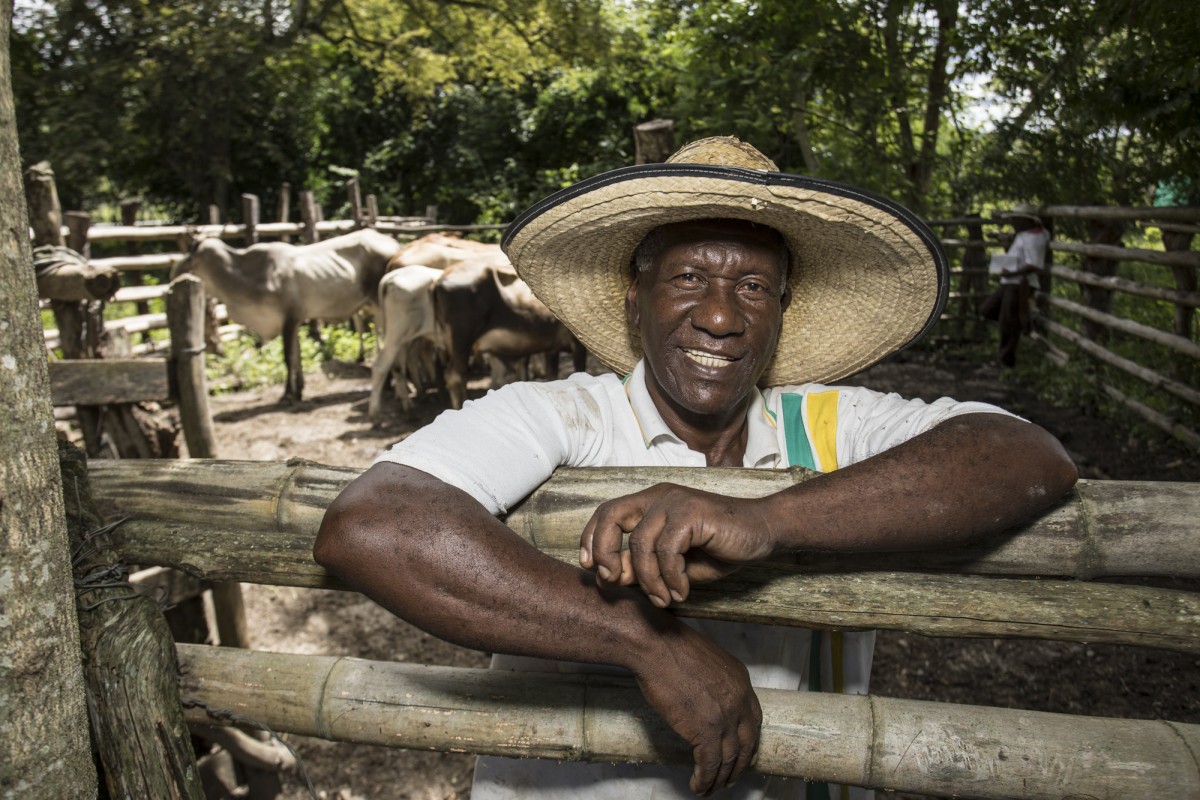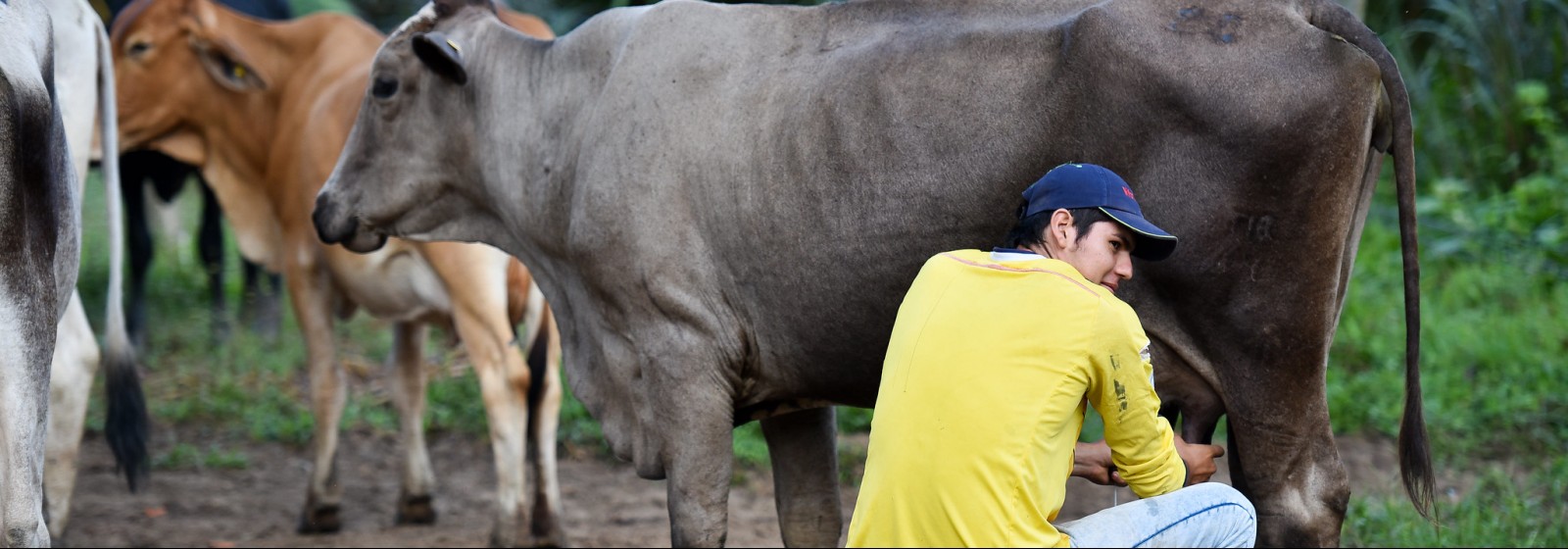A new paper provides a guide to understand current developments, impacts and mitigation measures related to the COVID-19 pandemic, with a focus on the beef and dairy value chain in Colombia.
By now most people are aware of the sweeping negative impacts of the COVID-19 pandemic on many sectors of the economy, at national and global levels. The beef and dairy (B&D) industry has not been spared. Up till now, it has not been possible to accurately measure the magnitude of these impacts, both negative and positive. The recently published working paper by researchers from the Alliance of Bioversity International and CIAT addresses this challenge in a comprehensive way, assessing current and potential impacts of the crisis on the B&D value chain in Colombia.
One of the main findings of the study is that the ongoing crisis will likely cause significant changes in our food systems. This includes greater response to new demands from consumers, who will be increasingly concerned with where their food comes from, its quality, sustainability and the welfare of animals. This implies that, once the crisis abates, more investments will be made to improve value chains, so that they are better equipped to respond to new demands.

Not all bad news for the beef value chain
This study focuses not only on primary production, but on the entire value chain, including direct and indirect actors, and of course, consumers. It also provides specific concepts on the impacts at each link in the chain. It also addresses positive trends, some of which may help producers and input providers to cope with the crisis and even strengthen areas that had already demanded attention before the current situation.
Also addressed in this paper are trends in beef and dairy consumption during and after the pandemic, their possible substitutes, and opportunities to advance the safety and sustainability of bovine livestock production. Trends in consumer behavior, such as how they purchase these products, and how their preferences will be oriented towards better food security, traceability, animal welfare and sustainability were also examined. An analysis was conducted on variations in prices both nationally and globally.
The dollar exchange rate’s behavior, an external factor but directly associated with the pandemic crisis, is addressed in this document. This is due largely to its impact on the trade balance of bovine products and agricultural inputs such as seeds, vaccines, concentrates, supplements, machinery, and others. The study suggests that there could be opportunity, once the crisis is over, for the country to open new export markets for B&D products.
Bovine livestock value chains are made up of many links, the impacts of which were reviewed in detail, especially in the supply of inputs, labor, access to credit, technical assistance and vaccination cycles. The following links were also addressed, such as the transportation and processing of both meat and milk in the main producing regions. On the other hand, crosscutting aspects such as agricultural research, platforms, and communication at different levels are also subject to analysis, and how virtuality and digitization will play a key role.
Inclusion gains rolled back
Livestock activity is not exempt from disruptions in the dynamics of gender, youth and minorities in the rural sector. Advances made towards more inclusion and gender equality in livestock farming are in jeopardy. Gender, for instance, is a structurally fragile issue, with historical labor divisions based mainly on gender identity. The emerging presence of armed actors in rural areas of the country are putting at risk gains made towards more gender equality.
The document likewise draws attention to rural education, stressing the need to promote better connectivity across the country. Authorities, it would seem, are accelerating rural connectivity plans and emergency alternatives to continue providing some degree of equality to the always-urgent need for better access to education in rural areas.
Sustainability could have greater attention
Prior to the pandemic, sustainable intensification was one of the most important debates in the livestock sector in the country and globally, responding to the need to sustainably meet the growing demand for food. The crisis has affected the continuity of these efforts, but the study is certain that when this pandemic is overcome, sustainability will be an even greater priority, requiring mitigation strategies to avoid further setbacks.
A matrix summarizes the main impacts of the crisis in the short (during the crisis), medium and long term, and proposes mitigation options for each impact by sector. The study concludes that while much remains to be investigated, adopting rapid mitigation actions could prevent further losses, even when combined with the risk of increasing threats, such as the challenges posed by climate change.
While this study focuses on Colombia, using mainly local sources, the results, impacts and possible mitigation strategies are relevant to other countries with similar practices and current state of the livestock sector; and, more importantly, the mitigation strategies that could be applied.
Read the Working Paper: COVID-19 and the bovine livestock sector in Colombia: Current and potential developments, impacts and mitigation options hdl.handle.net/10568/108354
Also available in Spanish: COVID-19 y el sector ganadero bovino en Colombia: Desarrollos actuales y potenciales, impactos y opciones de mitigación hdl.handle.net/10568/108370
--
This work was conducted as part of the CGIAR Research Programs (CRP) on Livestock, as well as the CRP on Climate Change, Agriculture and Food Security (CCAFS), which is carried out with support from CGIAR Fund Donors and through bilateral funding agreements. The views expressed in this document cannot be taken to reflect the official opinions of these organisations.
We gratefully acknowledge funding from Biotechnology and Biological Sciences Research Council project Advancing sustainable forage-based livestock production systems in Colombia (CoForLife) (BB/S01893X/1) and the UK Research and Innovation (UKRI) Global Challenges Research Fund (GCRF) GROW Colombia grant via the UK’s BBSRC (BB/P028098/1).
